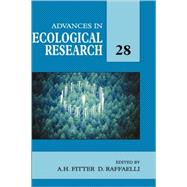
What is included with this book?
| Contributors to Volume 28 | v | ||||
| Preface | vii | ||||
| Free-air Carbon Dioxide Enrichment (FACE) in Global Change Research: A Review | |||||
|
|||||
|
|||||
|
1 | (2) | |||
|
3 | (4) | |||
|
7 | (6) | |||
|
7 | (1) | |||
|
7 | (6) | |||
|
13 | (10) | |||
|
13 | (2) | |||
|
15 | (4) | |||
|
19 | (1) | |||
|
20 | (1) | |||
|
20 | (3) | |||
|
23 | (20) | |||
|
24 | (4) | |||
|
28 | (5) | |||
|
33 | (4) | |||
|
37 | (4) | |||
|
41 | (2) | |||
|
43 | (14) | |||
|
46 | (1) | |||
|
46 | (9) | |||
|
55 | (2) | |||
| Modelling Terrestrial Carbon Exchange and Storage: Evidence and Implications of Functional Convergence in Light-use Efficiency | |||||
|
|||||
|
|||||
|
57 | (1) | |||
|
58 | (2) | |||
|
60 | (3) | |||
|
63 | (4) | |||
|
67 | (1) | |||
|
68 | (4) | |||
|
72 | (3) | |||
|
73 | (1) | |||
|
73 | (2) | |||
|
75 | (1) | |||
|
75 | (2) | |||
|
77 | (1) | |||
|
78 | (2) | |||
|
80 | (2) | |||
|
82 | (11) | |||
|
83 | (1) | |||
|
84 | (9) | |||
| Generalist Predators, Interaction Strength and Food-web Stability | |||||
|
|||||
|
|||||
|
|||||
|
93 | (1) | |||
|
94 | (4) | |||
|
98 | (2) | |||
|
98 | (1) | |||
|
98 | (2) | |||
|
100 | (2) | |||
|
102 | (6) | |||
|
102 | (1) | |||
|
103 | (4) | |||
|
107 | (1) | |||
|
108 | (6) | |||
|
108 | (2) | |||
|
110 | (2) | |||
|
112 | (2) | |||
|
114 | (4) | |||
|
114 | (1) | |||
|
115 | (2) | |||
|
117 | (1) | |||
|
118 | (1) | |||
|
118 | (9) | |||
|
119 | (1) | |||
|
119 | (8) | |||
| Delays, Demography and Cycles: A Forensic Study | |||||
|
|||||
|
|||||
|
|||||
|
127 | (1) | |||
|
127 | (1) | |||
|
128 | (6) | |||
|
134 | (6) | |||
|
140 | (2) | |||
|
142 | (3) | |||
|
144 | (1) | |||
| Spatial Root Segregation: Are Plants Territorial? | |||||
|
|||||
|
|||||
|
|||||
|
145 | (1) | |||
|
146 | (1) | |||
|
147 | (3) | |||
|
150 | (5) | |||
|
155 | (2) | |||
|
157 | (5) | |||
|
157 | (1) | |||
|
158 | (4) | |||
|
162 | (5) | |||
|
162 | (1) | |||
|
163 | (1) | |||
|
164 | (1) | |||
|
165 | (2) | |||
|
167 | (14) | |||
|
168 | (1) | |||
|
168 | (13) | |||
| The Relationship between Animal Abundance and Body Size: A Review of the Mechanisms | |||||
|
|||||
|
|||||
|
181 | (1) | |||
|
182 | (2) | |||
|
184 | (18) | |||
|
184 | (3) | |||
|
187 | (6) | |||
|
193 | (3) | |||
|
196 | (2) | |||
|
198 | (3) | |||
|
201 | (1) | |||
|
202 | (9) | |||
|
206 | (1) | |||
|
206 | (5) | |||
| Cumulative List of Titles | 211 | (4) | |||
| Index | 215 |
The New copy of this book will include any supplemental materials advertised. Please check the title of the book to determine if it should include any access cards, study guides, lab manuals, CDs, etc.
The Used, Rental and eBook copies of this book are not guaranteed to include any supplemental materials. Typically, only the book itself is included. This is true even if the title states it includes any access cards, study guides, lab manuals, CDs, etc.